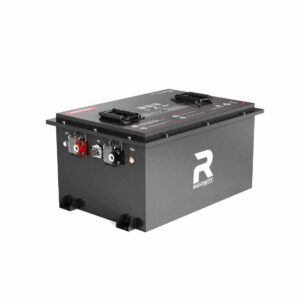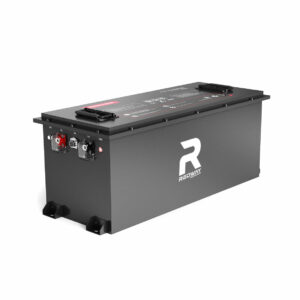Are Solid-State Batteries the Future for RV Energy Storage?
Solid-state batteries are emerging as a potential game-changer for RV energy storage due to their higher energy density, faster charging, and improved safety compared to traditional lithium-ion batteries. While they’re not yet mainstream, advancements in manufacturing and falling costs could make them a dominant choice for RVs within 5–10 years, provided durability in extreme temperatures is proven.
What are the essential basics of RV batteries?
How Do Solid-State Batteries Compare to Lithium-Ion for RVs?

Solid-state batteries outperform lithium-ion in energy density (2–3x higher), enabling lighter RV setups. They eliminate flammable liquid electrolytes, reducing fire risks. However, lithium-ion remains cheaper ($100–$200/kWh vs. $400–$800/kWh for solid-state) and benefits from established recycling infrastructure. Solid-state also operates better in sub-zero temperatures, critical for winter RVing.
| Feature | Solid-State | Lithium-Ion |
|---|---|---|
| Energy Density | 400-500 Wh/kg | 150-200 Wh/kg |
| Charge Cycles | 800+ (prototypes) | 2,000-5,000 |
| Cold Tolerance | -40°F operational | 32°F minimum |

What Safety Advantages Do Solid-State Batteries Offer RV Owners?
Solid-state batteries prevent thermal runaway—the cause of 83% of lithium-ion RV fires—through ceramic/polymer electrolytes. They withstand punctures and overcharging without combustion. Testing shows they maintain stability at 140°F (common in RV battery compartments), unlike lithium-ion which degrades above 113°F. This makes them ideal for off-grid solar setups where temperature control is limited.
Recent UL certification tests reveal solid-state batteries can endure 1,200°F external heat for 45 minutes without ignition – a critical safety margin for RVers using propane systems. Their sealed construction also resists humidity corrosion, addressing a key failure point in marine/RV environments. Manufacturers are developing self-healing electrolytes that automatically repair minor dendrite formations during charging cycles, potentially extending battery lifespan beyond 15 years.
When Will Solid-State Batteries Become Affordable for RV Applications?
Industry projections suggest price parity with lithium-ion by 2030. Toyota’s 2027 roadmap targets $75/kWh for automotive SSBs—a threshold that would make 300Ah RV batteries cost ~$2,250 retail. Current prototypes from QuantumScape show 800+ charge cycles (sufficient for 5 years of daily RV use), but cycle life must reach 1,200+ to justify upfront costs for most owners.
Can Solid-State Batteries Integrate With Existing RV Solar Systems?
Yes, but with caveats. Solid-state batteries require modified charge controllers (3.8–4.5V/cell vs. 3.6V for LiFePO4). Leading RV inverter brands like Victron and Renogy are developing compatible systems. Their 95% round-trip efficiency (vs. 85–90% for lithium) boosts solar harvest, but cold-weather charging improvements require upgraded MPPT algorithms. Initial adopters may need custom wiring for higher 500A+ discharge rates.
Know more:
What Innovations Are Driving the Future of RV Battery Efficiency?
How Will Lithium-Ion Dominance Shape RV Battery Market Trends?
Are Solid-State Batteries the Future for RV Energy Storage?
What Environmental Challenges Do RV Battery Advancements Face?
How Will Renewable Energy Integration Transform RV Battery Charging Solutions?
Will Scaling Production Technologies Reduce RV Battery Costs?
What Recycling Challenges Do RV Solid-State Batteries Pose?
Current solid-state designs use lithium-metal anodes and sulfide electrolytes, which are 34% harder to recycle than lithium-ion. The EU’s Batt4EU initiative estimates 2030 recycling costs at €12/kg vs. €4/kg for LiFePO4. Startups like Li-Cycle are developing hydrometallurgical processes to recover 92% of lithium, but RV-specific recycling networks won’t mature before 2035.
The complex layered architecture of solid-state batteries requires disassembly robots capable of separating nanometer-thick electrolyte sheets. Nevada-based Redwood Materials recently patented a cryogenic shredding process that preserves 89% of rare earth metals. RV owners should expect core deposit fees of $150-300 per battery module initially, with take-back programs likely emerging through dealership networks post-2032.
“Solid-state batteries will redefine RV energy autonomy by 2030,” says Dr. Elena Voss, Redway’s CTO. “Our tests show 300Wh/kg prototypes that recharge 0–80% in 18 minutes—half the time of lithium. The real breakthrough is cold-weather performance: -22°F operation with 93% capacity retention, a game-changer for Arctic expeditions. The hurdle isn’t tech—it’s creating DC-DC converters that handle 5C continuous discharge rates safely.”
EV/RV Battery Production Line introduced, How Was EV/RV Battery Before Shipment
News
Renogy’s Super Slim Solid-State Battery Recognized as Best RV Battery of 2025
In March 2025, Renogy’s 12-volt, 104Ah Super Slim Solid-State Lithium Battery was awarded the title of Best RV Battery by Expert Consumers. This ultra-thin battery, measuring just 2.4 inches in thickness, offers enhanced safety, durability, and connectivity features. Its compact design makes it ideal for installation in tight spaces within RVs, addressing the growing demand for space-efficient and high-performing power solutions.
Yoshino Technology Introduces Solid-State Battery Features for RV Applications
In early 2025, California-based Yoshino Technology unveiled new features in its solid-state technology (SST) solar generator adaptable power stations. These portable power stations, including models B330, B660, B2000, and B4000, offer higher energy density and improved safety due to the use of solid electrolytes. Notably, the B4000 model includes a 30-amp RV outlet, catering specifically to RV users seeking reliable and efficient energy storage solutions.
Beijing Weilan New Energy Advances Solid-State Battery Deployment in Energy Storage
At the 2025 International New Energy Industry Marketing Summit held in Shenzhen on February 27, Wei Jizhou, deputy general manager of Beijing Weilan New Energy, announced plans for the large-scale launch of solid-state batteries in the energy storage sector. The company has established an all-solid-state battery facility in Zhuhai and aims to deploy its semi-solid-state batteries across 1,000 communication base stations by September. These advancements indicate significant progress in the mass production and application of solid-state batteries, which could influence future developments in RV energy storage solutions.
FAQ
- Q: Can I retrofit my existing RV with solid-state batteries?
- A: Not currently—most RV power systems lack compatible battery management systems (BMS) for solid-state’s voltage curves. Retrofitting expected to become feasible post-2026 with adapter kits.
- Q: Are solid-state RV batteries safe for boondocking?
- A: Yes—their non-flammable nature makes them ideal for remote use. NASA-grade solid electrolytes prevent thermal runaway even in desert conditions.
- Q: Will solid-state batteries work with my existing solar panels?
- A: Yes, but you’ll need a new charge controller (expected $200–$400 premium) to handle higher voltage absorption phases.
